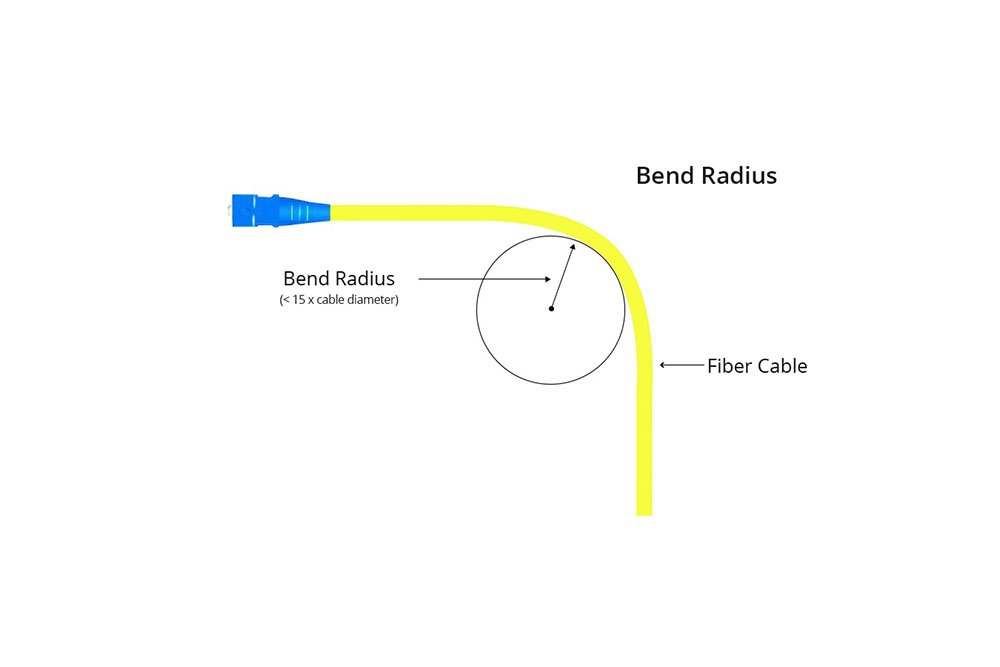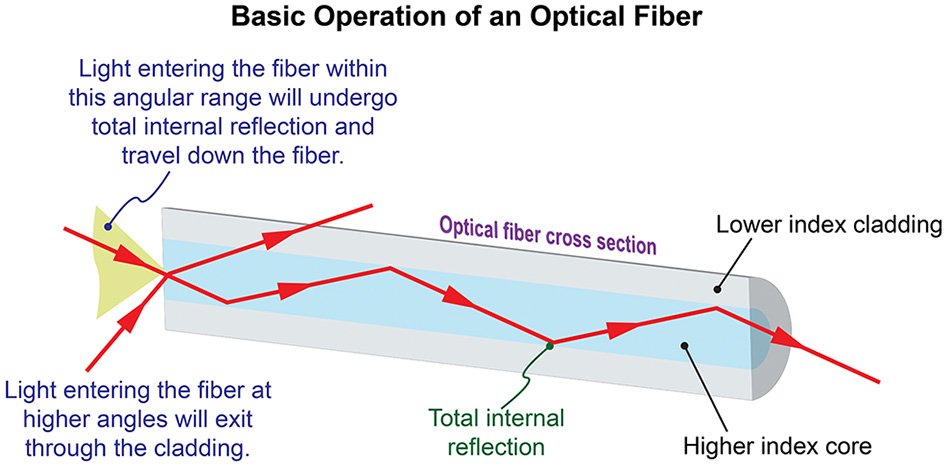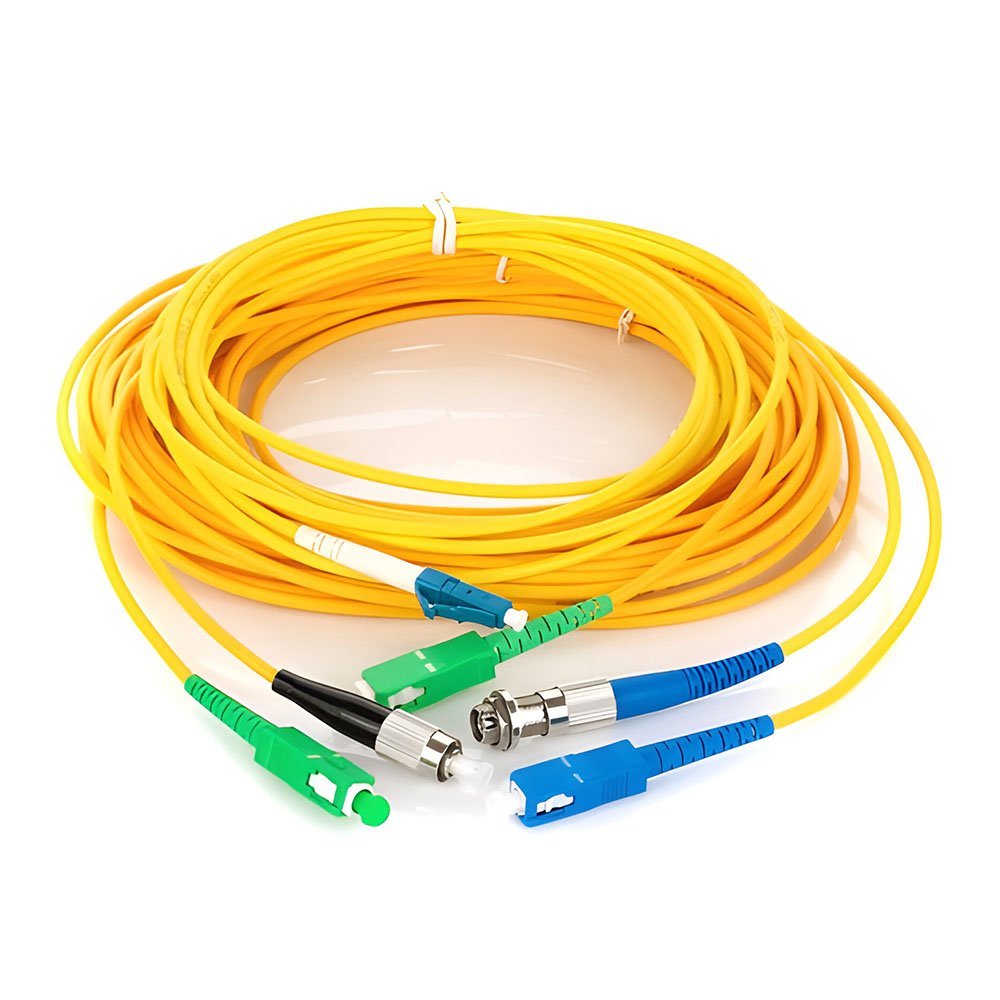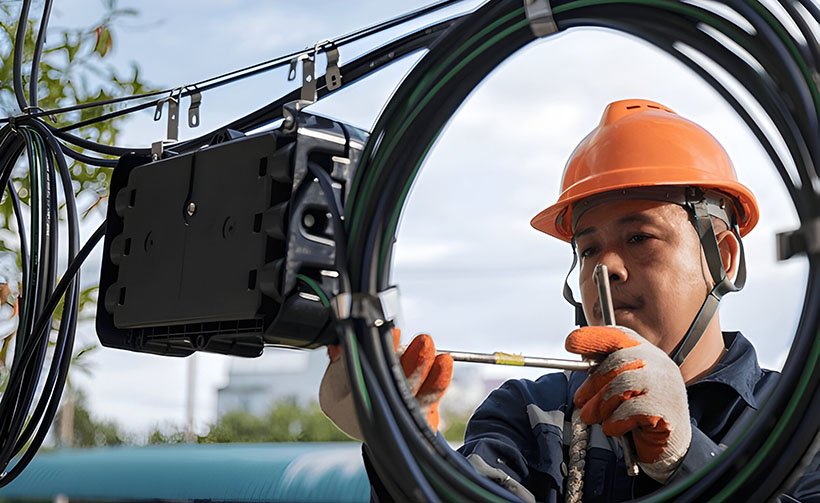When it comes to fiber optic cables, one of the most critical factors for ensuring reliable performance in fiber optic technology is understanding the concept of fiber bending radius. Imagine bending a straw too sharply—it might kink and stop working properly. Similarly, bending a fiber optic cable too tightly can disrupt the light signals traveling through it, leading to data loss or signal degradation. In this beginner-friendly guide, we’ll explore what fiber bending radius is, why it matters in fiber optic installation, how it affects different types of fiber optic cables, and practical tips for managing it. Whether you’re setting up a home network or working on a large-scale fiber optic technology project, understanding fiber bending radius is key to keeping your connections fast and reliable. Let’s dive in and unravel this essential aspect of fiber optic cables!
What Is Fiber Bending Radius?

Defining Fiber Bending Radius
The fiber bending radius refers to the minimum radius a fiber optic cable can be bent without causing damage or affecting its performance. Think of it as the smallest circle you can bend the cable into before it starts to have problems. In fiber optic technology, the fiber bending radius is measured in millimeters or centimeters and varies depending on the type of fiber optic cable. When a fiber optic cable is bent beyond this minimum radius, the light signals inside can leak out or scatter, leading to signal loss—often called “bend loss“—or even physical damage to the fiber itself.
How It Works in Fiber Optic Cables

Inside a fiber optic cable, light travels through a glass or plastic core, guided by a surrounding cladding layer with a lower refractive index. This setup keeps the light bouncing within the core as it moves along the fiber. However, when the cable is bent too tightly, the light can’t follow the curve properly. Some of the light escapes into the cladding or beyond, causing a loss of signal strength. In fiber optic technology, the fiber bending radius is a critical specification because it determines how much bending the cable can handle before this loss becomes significant. Manufacturers provide a minimum fiber bending radius for each cable, often listed as a multiple of the cable’s diameter—for example, a cable might have a minimum bending radius of 10 times its diameter.
Why It’s a Key Specification
The fiber bending radius is a key specification in fiber optic installation because it directly impacts the reliability and efficiency of fiber optic cables. If you bend a cable too sharply—say, while routing it around a tight corner in a data center—you risk degrading the signal, slowing down data transmission, or even breaking the fiber inside. In fiber optic technology, understanding and respecting the fiber bending radius ensures that your network performs at its best, whether you’re streaming videos at home or managing a large telecom network.
Why Fiber Bending Radius Matters
Impact on Signal Quality
The primary reason fiber bending radius matters in fiber optic technology is its effect on signal quality. When a fiber optic cable is bent beyond its minimum fiber bending radius, the light signals traveling through the core can escape, leading to a phenomenon called bend loss. This loss weakens the signal, which can result in slower data speeds, dropped connections, or errors in data transmission. For example, in a high-speed internet connection, excessive bending might cause buffering during video streaming or interruptions in a video call. In fiber optic installation, ensuring the cable stays within its fiber bending radius limits is crucial for maintaining clear, reliable communication.
Risk of Physical Damage
Bending a fiber optic cable too tightly doesn’t just affect the signal—it can also cause physical damage. The glass core inside fiber optic cables is extremely thin and fragile, and bending it beyond the recommended fiber bending radius can create micro-cracks or even break the fiber entirely. These micro-cracks, often called micro-bends, can worsen over time, leading to permanent signal loss. In fiber optic technology, a broken fiber means the cable needs to be replaced, which can be costly and time-consuming, especially in large-scale fiber optic installation projects like undersea cables or city-wide networks.
Long-Term Reliability of Fiber Optic Cables
Respecting the fiber bending radius also ensures the long-term reliability of fiber optic cables. Even if a cable doesn’t break immediately when bent too tightly, repeated stress or small micro-bends can degrade its performance over time. In fiber optic technology, this gradual degradation can lead to increased maintenance costs and unexpected network downtime. By following the recommended fiber bending radius during fiber optic installation, you can extend the lifespan of your fiber optic cables and keep your network running smoothly for years.
Fiber Bending Radius in Different Types of Fiber Optic Cables
Single-Mode Fiber and Bending Radius
Single-mode fiber optic cables are designed to carry a single light signal over long distances, making them common in telecom networks and long-haul internet connections. In fiber optic technology, single-mode fibers have a smaller core—typically around 8 to 10 micrometers—which makes them more sensitive to bending. Because of this smaller core, the fiber bending radius for single-mode fibers is generally larger, meaning they can’t be bent as tightly as other types of fibers. For example, a typical single-mode fiber optic cable might have a minimum fiber bending radius of 30 millimeters, or about 10 to 15 times its diameter, to avoid significant bend loss.

Multimode Fiber and Bending Radius
Multimode fiber optic cables can carry multiple light signals at once, making them ideal for shorter distances, like in data centers or local area networks (LANs). In fiber optic technology, multimode fibers have a larger core—usually 50 to 62.5 micrometers—which makes them less sensitive to bending compared to single-mode fibers. As a result, the fiber bending radius for multimode fiber optic cables is typically smaller, allowing for tighter bends. For instance, a multimode cable might have a minimum fiber bending radius of 15 millimeters, or about 5 to 10 times its diameter, depending on the specific cable design.
Bend-Insensitive Fiber Optic Cables
In recent years, fiber optic technology has introduced bend-insensitive fiber optic cables, which are designed to handle tighter bends without significant signal loss. These cables use special core and cladding designs to keep light signals contained even when the cable is bent more sharply. In fiber optic installation, bend-insensitive cables are often used in tight spaces—like apartment buildings or crowded data centers—where routing cables around corners is unavoidable. The fiber bending radius for bend-insensitive fiber optic cables can be as low as 7.5 millimeters, or about 2 to 5 times the cable diameter, making them much more flexible while still maintaining performance.
Practical Guidelines for Managing Fiber Bending Radius
Following Manufacturer Specifications
The first and most important guideline for managing fiber bending radius in fiber optic installation is to follow the manufacturer’s specifications for your fiber optic cables. Every cable comes with a datasheet that lists its minimum fiber bending radius, often specified for both short-term (during installation) and long-term (once installed) conditions. For example, a cable might allow a tighter bend during installation—say, 10 times its diameter—but require a larger radius, like 15 times its diameter, once it’s in place to avoid long-term stress. Always check these specs before routing your fiber optic cables to ensure you’re within safe limits.
Using Proper Cable Management Tools
In fiber optic installation, using the right tools can help you manage fiber bending radius effectively. Cable trays, conduits, and bend radius guides are designed to support fiber optic cables and prevent them from being bent too tightly. For example, a bend radius guide might be a curved plastic piece that you attach at a corner, ensuring the cable follows a smooth, safe curve. In fiber optic technology, these tools are especially important in tight spaces, like inside equipment racks or wall conduits, where cables are more likely to be bent sharply.
Avoiding Common Bending Mistakes
There are a few common mistakes to avoid during fiber optic installation to protect the fiber bending radius. First, don’t force a fiber optic cable around a sharp corner—always use a gradual curve. Second, avoid tying cables too tightly with zip ties, as this can pinch the cable and create micro-bends. Third, be cautious when pulling cables through conduits; excessive tension can cause the cable to bend too sharply at entry or exit points. In fiber optic technology, taking these precautions ensures your fiber optic cables perform reliably without signal loss.
Fiber Bending Radius in Real-World Applications
Fiber Optic Installation in Data Centers
In data centers, fiber optic cables connect servers, switches, and storage devices, often in very crowded spaces. In fiber optic installation for data centers, managing fiber bending radius is critical because cables are frequently routed through tight spaces, like under floors or inside equipment racks. Using bend-insensitive fiber optic cables can help, as they allow for tighter bends without signal loss. However, even with these cables, installers must follow proper cable management practices to avoid exceeding the fiber bending radius, ensuring high-speed data transmission remains uninterrupted.
Fiber Optic Technology in Residential Settings
In residential settings, fiber optic technology is increasingly common for high-speed internet, often called fiber-to-the-home (FTTH). In fiber optic installation for homes, fiber optic cables might need to be routed through walls, around corners, or behind furniture. The fiber bending radius becomes a concern in these tight spaces, especially if installers aren’t careful. For example, bending a cable too sharply around a doorframe could cause signal loss, leading to slower internet speeds. Using bend-insensitive cables and proper routing techniques helps maintain performance in these scenarios.
Telecom Networks and Long-Haul Connections
In telecom networks, fiber optic cables are used for long-haul connections, such as between cities or across oceans. In fiber optic technology for these applications, single-mode fiber optic cables are common due to their ability to transmit signals over long distances. However, these cables have a larger fiber bending radius, making them more sensitive to bending. During fiber optic installation, telecom engineers must ensure that cables are laid out with gentle curves, often using large conduits or aerial setups to avoid tight bends, ensuring signal integrity over vast distances.

Challenges and Solutions in Managing Fiber Bending Radius
Challenges in Tight Spaces
One of the biggest challenges in managing fiber bending radius is working in tight spaces, such as inside equipment cabinets or through narrow conduits. In fiber optic installation, these environments make it difficult to avoid sharp bends, increasing the risk of signal loss or damage to fiber optic cables. For example, in a densely packed data center, there might be little room to route cables with the recommended fiber bending radius, leading to potential performance issues.
Solutions: Bend-Insensitive Cables and Tools
To address this challenge, fiber optic technology has developed bend-insensitive fiber optic cables, which can handle tighter bends without significant signal loss, as mentioned earlier. Additionally, using specialized tools like bend radius protectors—small curved guides that prevent cables from bending too sharply—can help. In fiber optic installation, combining these solutions with careful planning, such as mapping out cable routes in advance, ensures that the fiber bending radius is respected even in cramped spaces.
Training and Awareness for Installers
Another challenge is ensuring that installers are aware of the importance of fiber bending radius. In fiber optic technology, improper handling during fiber optic installation—like bending cables too tightly or using excessive force—can lead to immediate or long-term issues. The solution lies in proper training: installers should be educated on the fiber bending radius specifications for the fiber optic cables they’re working with, as well as best practices for routing and securing cables to avoid bending mistakes.
Conclusion: Mastering Fiber Bending Radius for Better Fiber Optic Performance
The concept of fiber bending radius might seem like a small detail, but it plays a huge role in the performance and reliability of fiber optic cables. By understanding what fiber bending radius is, why it matters, and how to manage it, you can ensure that your fiber optic installation—whether for a home, data center, or telecom network—delivers fast, reliable connectivity. From respecting manufacturer specifications to using bend-insensitive fiber optic cables and proper cable management tools, there are practical steps you can take to avoid the pitfalls of excessive bending. As fiber optic technology continues to evolve, staying mindful of fiber bending radius will help you make the most of your fiber optic cables, keeping your network running smoothly for years to come.

